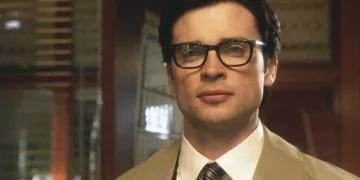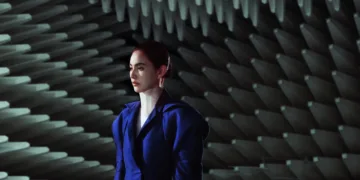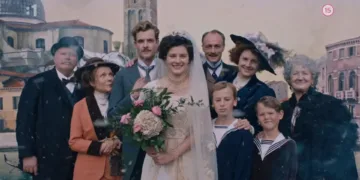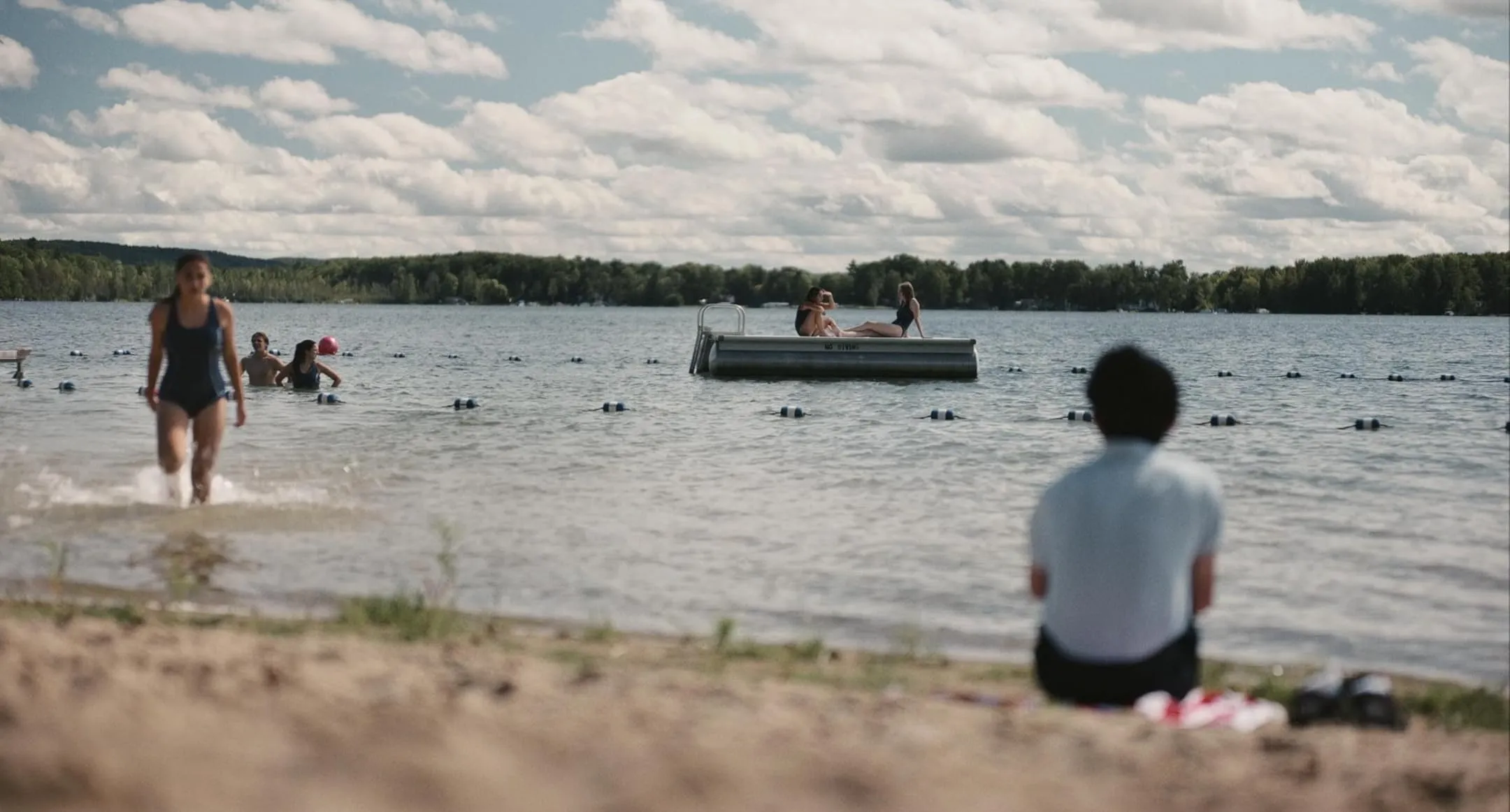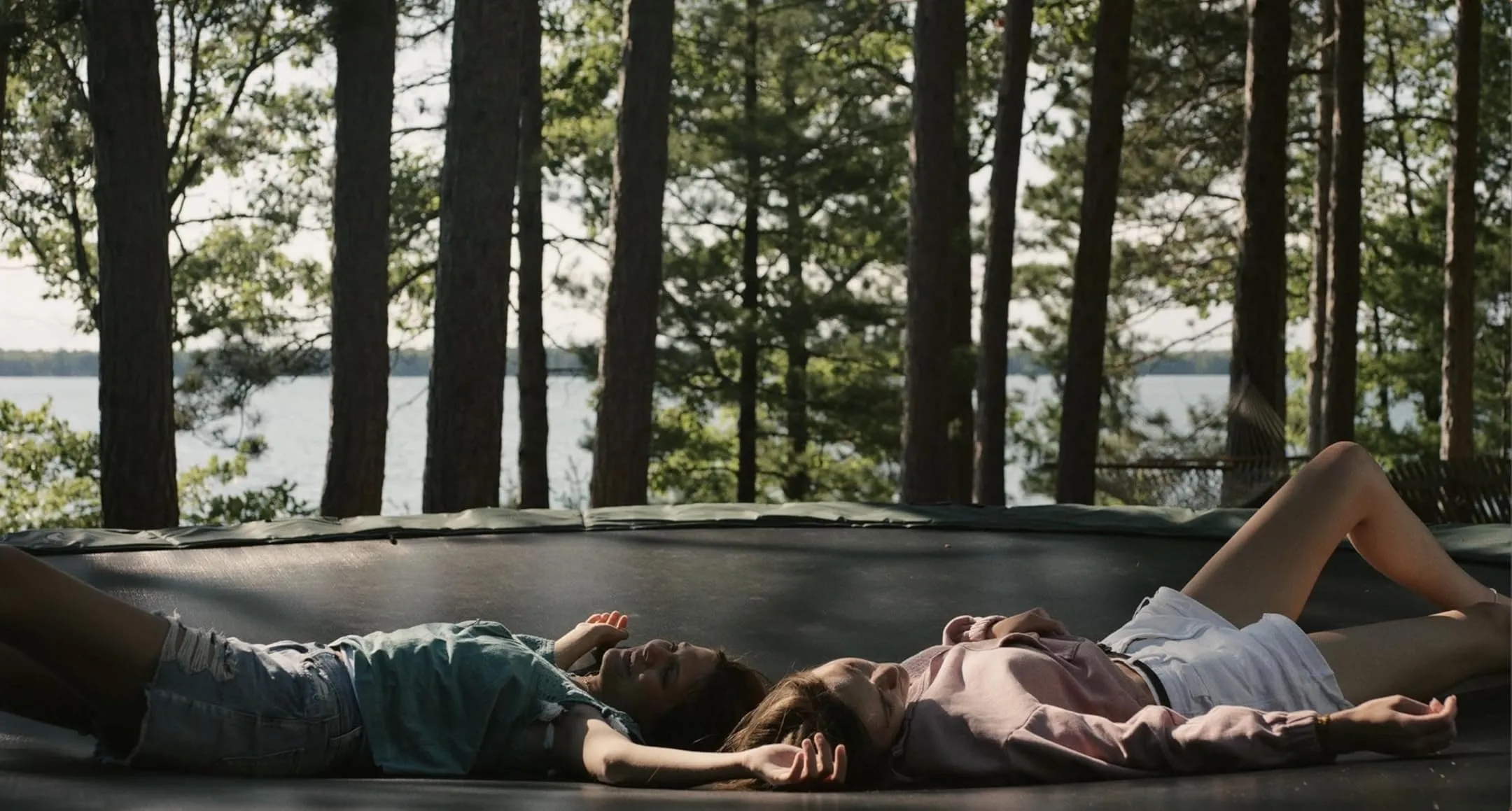Sunfish (& Other Stories on Green Lake) extends an invitation into a realm of reflective stillness. The film draws one into a quiet lakeside world, where the gentle murmur of water and the shifting light across Green Lake in Michigan set a stage for subtle human introspection. The environment is not merely a backdrop; it exerts a palpable presence that influences every vignette with a warm, yet shadowed, luminescence.
The narrative unfolds across four distinct episodes. In “Sunfish,” a young soul confronts solitude and emerging desire. “Summer Camp” captures a young musician caught in the strain of artistic ambition, his inner world echoing the quiet intensity of the surroundings.
“Two-Hearted” presents a small-scale interlude of human connection that emerges unexpectedly, while “Resident Bird” offers a tender portrayal of parting and the weight of unspoken bonds. Each segment presents a fragment of life, a fleeting snapshot that calls for personal reflection on the interplay of human frailty and nature’s silent rhythms.
Sierra Falconer’s debut demonstrates a measured and spare style that renders everyday moments with deliberate care. Her direction is marked by soft interludes and moments of unspoken drama, allowing the viewer to linger on the delicate balance between stillness and the undercurrent of existential questions.
Fragments of Existence: Weaving Tales on Green Lake
The film unfolds as a collection of distinct yet interlaced narratives that together portray a singular, reflective vision of life at Green Lake. Each segment breathes with its own rhythm—a pulse of change, solitude, and the haunting quest for belonging.
The anthology format permits a multiplicity of voices to echo against the still waters, inviting the viewer to sense an overarching presence that binds these seemingly disparate moments.
In the opening vignette, “Sunfish,” we follow Lu, a young girl thrust into an unfamiliar world, whose unease gradually shifts into a quiet yearning for discovery. The humble sailboat she fixes her gaze upon acts as a quiet emblem of renewal, its slender form both fragile and determined in the face of the vast, indifferent lake.
“Summer Camp” brings forth the story of Jun, whose days at the music camp are rendered through the language of silences and strained notes. The intense practice sessions, captured in close, almost confessional frames, speak to an inner tumult that stirs beneath the surface. Minimal dialogue and striking imagery serve as mirrors to the silent battles fought within.
“Two-Hearted” offers a brief interlude where a single mother and a local man find themselves caught in a curious, almost fated misadventure. Their encounter, tinted with moments of wry humor and earnest human exchange, sketches a delicate portrait of fleeting connection amid the pervasive solitude of the lakeside.
In “Resident Bird,” the focus shifts to two sisters whose daily existence at a boarding house is punctuated by quiet moments of shared grief and anticipation. Their bond, rendered in soft exchanges and unspoken understandings, hints at the inevitable transformation that lies in wait.
The film’s restrained dialogue and gentle visual cues create a mode of storytelling that is both stark and reflective. Its measured pace invites viewers to piece together subtle thematic signals, each scene a small mirror held up to the darker questions of existence.
Faces in the Reflective Mirror: Character Development and Performances
From the quiet shores of Green Lake emerge figures caught in their own internal storms. The film crafts its portraits with deliberate restraint and meditative care. In one segment, young Lu experiences a slow easing of unease as she is thrust into an unfamiliar setting.
Her early discomfort gives way to moments of tender revelation as interactions with her gentle grandparents and the calm presence of nature offer silent guidance. A knowing glance, the measured calm of a shared pause beside the water—all hint at a subtle shift from isolation toward an emerging self-awareness.
Jun, in another passage, confronts a private struggle marked by the weight of unspoken expectations. His solitary practice sessions, rendered in muted tones and sparing dialogue, capture a soul beset by a relentless internal pressure. The camera lingers on the slight tremor in his hands and the dim light of his expression, suggesting a life pressed under the heaviness of perfection.
Annie appears as a figure carved by duty and a sudden, unexpected burst of defiant spontaneity. Her role as caretaker is interlaced with an unforeseen episode that disrupts the mundane, leaving behind a trace of bittersweet revolt against routine. Her subtle smiles and hardened glances reveal a complexity that escapes simple definition.
Between them, the bond of Blue Jay and Robin unfolds in brief, powerful interactions. Their shared moments—quiet exchanges of looks and the soft brush of hands—speak of familial obligation entwined with the sorrow of looming parting.
Brief yet potent, supporting characters offer flashes of wisdom and quiet mystery. Each transient appearance carries a weight that deepens the film’s reflective atmosphere. The performances remain restrained and sincere, capturing small, telling moments that mirror the darker questions of human experience.
The Quiet Chasm: Themes and Emotional Resonance
The film casts a somber light on the transformation from youth to an uncertain adulthood. In each vignette, we witness the fragile process of self-discovery, marked by a hesitant confrontation with loss and the bittersweet pain of change.
Young Lu, stepping timidly into an unfamiliar world, embodies the quiet agony of leaving behind the comfort of a once-familiar existence. Her inner life is rendered through moments that flicker like shadows across a fading day, each silent pause an unspoken lament for what is lost and what may never return.
Family bonds emerge as both haven and trial. The gentle exchanges between grandparents and grandchildren convey a deep-seated connection, one that speaks in the language of shared silence and subtle gestures.
The unvoiced understanding between siblings, too, carries a weight that hints at the cost of parting ways, a reminder that closeness can wither in the face of inevitable separation. These relationships are portrayed as delicate equilibria, their tenderness interlaced with an underlying tension that hints at unhealed wounds.
A persistent motif is the contrast between solitude and the search for communion. Figures drift in isolation against the expansive backdrop of the lake—a mirror reflecting the quiet turmoil within. This same lake acts as a silent witness, its still waters holding echoes of forgotten conversations and muted yearnings.
Nature, in this narrative, stands as a somber double of the human spirit; the gentle lapping of water, the fleeting flight of birds, and the soft rustle of the wind all mirror the internal cadence of despair and longing. Each natural image offers a transient glimpse into the hidden recesses of the heart, where the struggle with darkness and the pull toward connection remain ever intertwined.
Reflections in Light and Sound
Green Lake unfolds on screen as a realm where light and shadow converse in hushed tones. The camera’s gentle wanderings capture vast, open expanses of water that echo a silence heavy with unspoken questions.
Every frame is a study in restraint—a play of natural illumination that softens stark details while exposing the quiet burdens etched into the faces of its inhabitants. In moments of intimate close-up, a single furrowed brow or a lingering gaze seems to confess the solitude of existence.
The cinematographer’s artistry is evident in the deliberate choice of angles and movement. Sweeping aerial views of the lake evoke the sensation of a vast, indifferent presence observing the lives unfolding below. The measured pace of the visuals is a silent counterpoint to the inner turbulence of the characters, suggesting that beauty may mask a deeper, unsettling emptiness.
The interplay of light and shadow, captured with both moving and static shots, creates a setting that is as much a participant in the narrative as any of the human figures. A modest yet evocative mise-en-scène hints at hidden truths, where each detail in a room or along the water’s edge carries a weight that defies immediate explanation.
The soundscape is equally thoughtful. A musical score—minimal yet haunting—threads softly through the scenes, its gentle strains evoking the fragile heartbeat of the world depicted. Ambient sounds—a soft rustle of leaves, the persistent murmur of water against the shore, distant calls of birds—resonate with a quiet intensity.
These auditory elements, subtly interwoven with the dialogue and visuals, invite the viewer to listen to the spaces between words. In a setting where every visual and sonic element converges, the production design feels honest and lived-in, reinforcing the film’s silent inquiry into the nature of human solitude and the ineffable pull of memory.
Ephemeral Directives: Direction, Symbolism, and Impact
Sierra Falconer’s approach as a director reveals a profound intimacy with Green Lake, a closeness that saturates the film with a palpable sense of place and authenticity. Her understated style, both gentle and thought-provoking, casts each scene in a soft glow that invites quiet reflection on the human condition.
The director’s measured hand leaves space for personal interpretation, allowing the subtle interplay of shadow and light to speak volumes about hidden sorrows and unacknowledged hopes.
The film is rich in symbols that serve as silent emissaries. A modest sunfish boat appears as a quiet sign of rebirth, its unassuming presence suggesting that even small gestures can spark change amid the routine.
Recurring images of birds, elusive and ever-present, hint at the delicate balance between confinement and the yearning for escape. Natural elements, from the stillness of water to the fleeting play of clouds, do more than set the scene; they mirror the characters’ inner struggles, echoing the constant tension between isolation and the desire for connection.
A deliberate pacing pervades the narrative, granting each vignette the chance to linger in the viewer’s mind. Prolonged moments of silence and soft pauses in dialogue invite contemplation, urging one to sense the unspoken weight behind each gesture. The film’s tempo allows its reflective spirit to unfurl gradually, like the slow reveal of a hidden truth that questions the permanence of our own experiences.
Themes of maturation, familial ties, and solitary longing intertwine with the visual and auditory cues to create a canvas of quiet revelations. The combined interplay of direction, symbolism, and technical craftsmanship offers an experience that clings like a half-remembered echo, provoking inquiry into the darker folds of our inner lives without resorting to grand proclamations.
The Review
Sunfish (& Other Stories on Green Lake)
A quiet meditation on life's fragile passages, Falconer's film gently captures solitude and connection with subtle imagery and measured pace. Each vignette reveals layers of human emotion, inviting deep reflection without overwhelming proclamations. The restrained elegance and careful artistry offer a moving portrayal of growth and introspection, leaving a lasting impression on the viewer.
PROS
- Poetic storytelling with a reflective tone.
- Beautiful cinematography that captures the essence of nature.
- Rich symbolism and evocative imagery.
CONS
- Pacing may feel slow for some viewers.
- Limited dialogue might challenge those seeking more exposition.

















